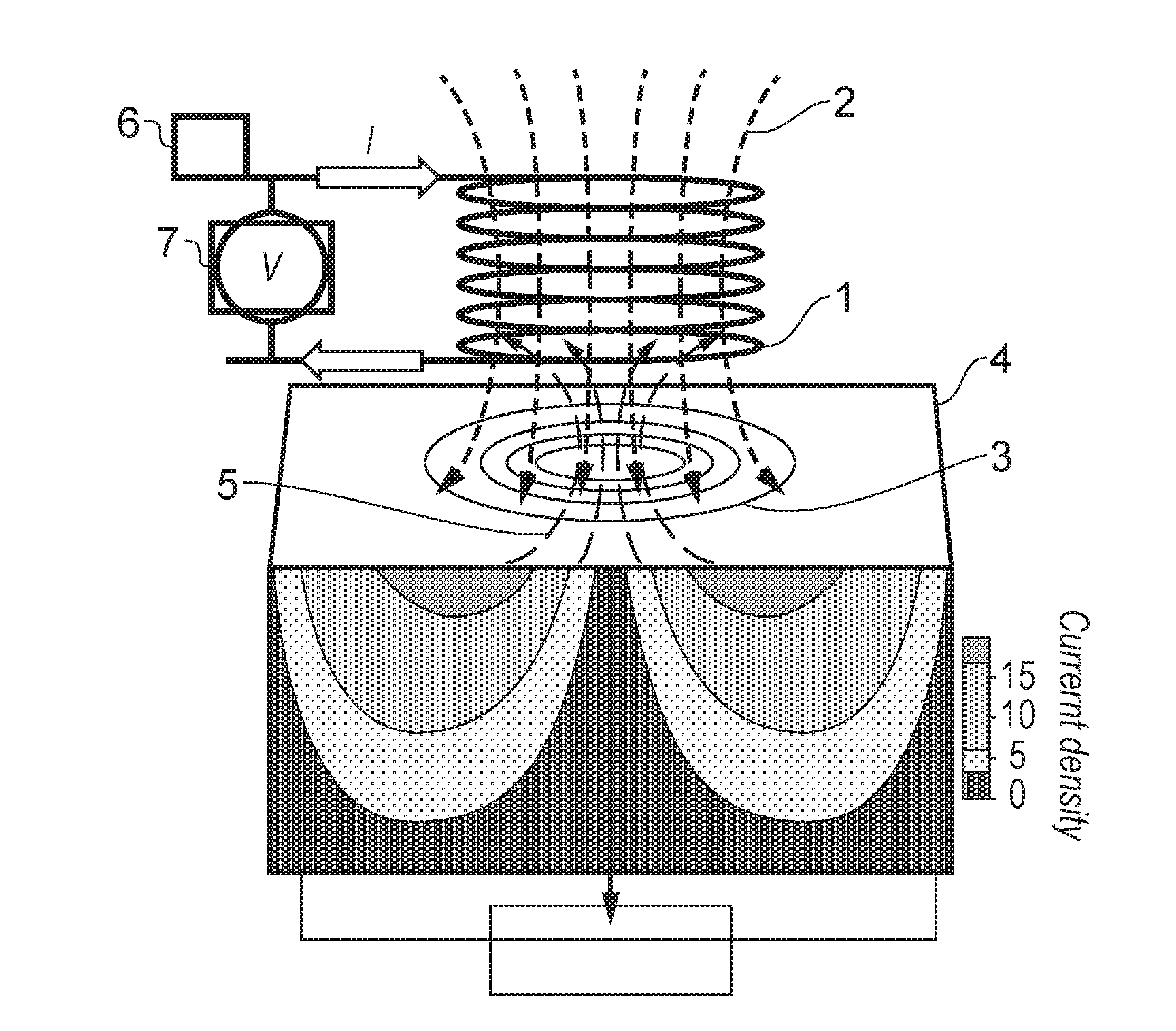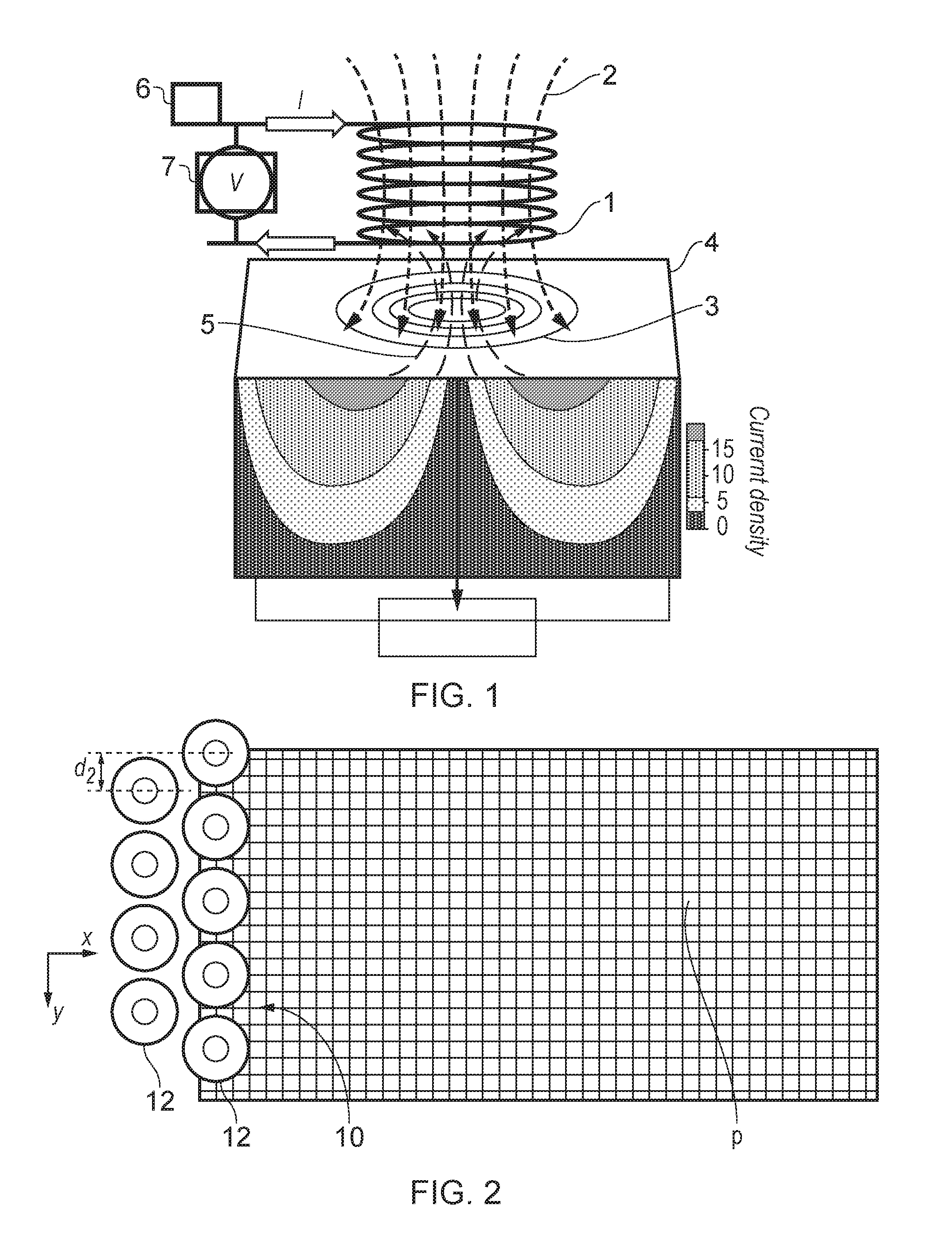Multi-element sensor array calibration method
a sensor array and array technology, applied in the field of multi-element sensor array calibration methods, can solve the problems of reducing or increasing impedance, magnitude or phase of current, method is relatively slow, arrays generally have a lower sensitivity and resolution compared to rastered single sensors, and achieve reliable rejection thresholds.
- Summary
- Abstract
- Description
- Claims
- Application Information
AI Technical Summary
Benefits of technology
Problems solved by technology
Method used
Image
Examples
Embodiment Construction
[0034]FIG. 4 shows an eddy current array inspection device calibration apparatus 100. The apparatus 100 comprises an eddy current array inspection device 102 and a calibration block 110.
[0035]The inspection device 102 comprises a plurality of sensor elements 112. Each sensor element 112 comprises an electromagnetic coil 1 (shown in further detail in FIG. 1), which is connected to a power source 7 and an electrical current sensor 6, which detects at least one of the impedance (Z), magnitude (|Z|) and phase (φ) of the current I flowing through the coil 1, to thereby detect near surface defects in an electrically conductive article comprising, for instance, a metal or a carbon fibre composite.
[0036]The coils 1 of the sensors 112 of the inspection device 102 are spaced apart in rows 104, 106 extending in a direction X to define an array. The array further defines a direction Y normal to the direction X, parallel to the surface of the calibration block in use. Each row 104, 106 is stagge...
PUM
 Login to View More
Login to View More Abstract
Description
Claims
Application Information
 Login to View More
Login to View More - R&D
- Intellectual Property
- Life Sciences
- Materials
- Tech Scout
- Unparalleled Data Quality
- Higher Quality Content
- 60% Fewer Hallucinations
Browse by: Latest US Patents, China's latest patents, Technical Efficacy Thesaurus, Application Domain, Technology Topic, Popular Technical Reports.
© 2025 PatSnap. All rights reserved.Legal|Privacy policy|Modern Slavery Act Transparency Statement|Sitemap|About US| Contact US: help@patsnap.com



